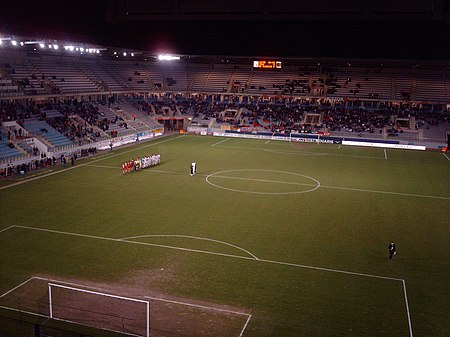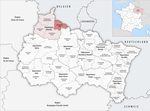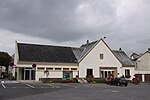Stade Louis Dugauguez
2000 establishments in France21st-century architecture in FranceCS Sedan ArdennesFootball venues in FranceFrench sports venue stubs ... and 2 more
Sports venues completed in 2000Sports venues in Ardennes (department)

Stade Louis Dugauguez is a multi-use stadium in Sedan, France. It is currently used mostly for football matches and is the home stadium of CS Sedan Ardennes. The stadium holds 23,189 people and was built in 2000. It replaced Stade Emile Albeau. It is named after the former French footballer and manager Louis Dugauguez (1918–1991).
Excerpt from the Wikipedia article Stade Louis Dugauguez (License: CC BY-SA 3.0, Authors, Images).Stade Louis Dugauguez
Boulevard du Maréchal de Lattre de Tassigny, Sedan
Geographical coordinates (GPS) Address Nearby Places Show on map
Geographical coordinates (GPS)
| Latitude | Longitude |
|---|---|
| N 49.694147 ° | E 4.938847 ° |
Address
Boulevard du Maréchal de Lattre de Tassigny
08200 Sedan
Grand Est, France
Open on Google Maps









